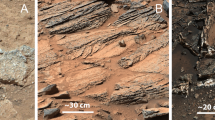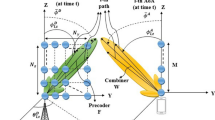Abstract
One of the most challenging aspects of the new-generation Low-Frequency Aperture Array (LFAA) radio telescopes is instrument calibration. The operational LOw-Frequency ARray (LOFAR) instrument and the future LFAA element of the Square Kilometre Array (SKA) require advanced calibration techniques to reach the expected outstanding performance. In this framework, a small array, called Medicina Array Demonstrator (MAD), has been designed and installed in Italy to provide a test bench for antenna characterization and calibration techniques based on a flying artificial test source. A radio-frequency tone is transmitted through a dipole antenna mounted on a micro Unmanned Aerial Vehicle (UAV) (hexacopter) and received by each element of the array. A modern digital FPGA-based back-end is responsible for both data-acquisition and data-reduction. A simple amplitude and phase equalization algorithm is exploited for array calibration owing to the high stability and accuracy of the developed artificial test source. Both the measured embedded element patterns and calibrated array patterns are found to be in good agreement with the simulated data. The successful measurement campaign has demonstrated that a UAV-mounted test source provides a means to accurately validate and calibrate the full-polarized response of an antenna/array in operating conditions, including consequently effects like mutual coupling between the array elements and contribution of the environment to the antenna patterns. A similar system can therefore find a future application in the SKA-LFAA context.











Similar content being viewed by others
Notes
Reconfigurable Open Architecture Computing Hardware (https://casper.berkeley.edu/wiki/ROACH)
Collaboration for Astronomy Signal Processing and Electronics Research (https://casper.berkeley.edu/)
References
Dewdney, P.E., Hall, P.J., Schilizzi, R.T., Lazio, T.J.L.W.: The square kilometre array. Proc. IEEE 97(8), 1482–1496 (2009)
Dewdney, P.E.: SKA1 System baseline design, (2013) http://www.skatelescope.org/wp-content/uploads/2012/07/SKA-TEL-SKO-DD-001-1_BaselineDesign1.pdf
Van Haarlem, M.P., et al.: LOFAR: the Low frequency array. Astron. Astrophys. 556(A2), 1–53 (2013). doi:10.1051/0004-6361/201220873
Raucy, C., et al.: “Low-cost near field pattern measurement technique for aperture array characterization,” in Proc. EuCAP, Goteborg, Sweden, pp. 661–665 (2013)
Virone, G., et al.: Antenna pattern verification system based on a micro Unmanned Aerial Vehicle (UAV). IEEE Antennas Wirel. Propag. Lett. 13, 169–172 (2014)
Virone, G., et al.: “Antenna pattern measurements with a flying far field source (hexacopter),” Proceedings of CAMA 2014, Antibes Juan-les-Pins, France (2014)
Bolli, P., et al.: Basic element for square kilometre array training (BEST): evaluation of the antenna noise temperature. IEEE Antennas Propag. Mag. 50(2), 58–65 (2008). doi:10.1109/MAP.2008.4562257
Chiabrando, F., Lingua, A., Piras, M.:“Direct photogrammetry using UAV: tests and first results,” ISPRS Archives, vol. XL-1/W2, pp. 81 86, UAV g2013, Rostock, Germany (2013)
Monari, J.et al.: “Aperture Array for Low Frequency: the Vivaldi solution”, International Conference on Electromagnetics in Advanced Applications (ICEAA), Turin, Italy (2013)
Bij de Vaate, J.G., et al.: “Low frequency aperture array developments for phase 1 SKA,” Proceedings URSI, Istanbul, Turkey (2011)
Perini, F., Bianchi, G., Schiaffino, M., Monari, J.: “BEST receiver experience: general architecture, design and integration”, Wide Field Science and Technology for the Square Kilometre Array, Proceedings of the SKADS Conference, Chateau de Limelette, Belgium (2009)
Tibaldi, A., et al.: Design considerations for a low-frequency Vivaldi array element, PIERS Proceedings, pp. 240–244, Stockholm (2013).
Murgia, M., et al.: “Sardinia aperture array demonstrator,” SPIE 9145, Ground-based and Airborne Telescopes V, 91454S (2014). doi: 10.1117/12.2055793
Author information
Authors and Affiliations
Corresponding author
Rights and permissions
About this article
Cite this article
Pupillo, G., Naldi, G., Bianchi, G. et al. Medicina array demonstrator: calibration and radiation pattern characterization using a UAV-mounted radio-frequency source. Exp Astron 39, 405–421 (2015). https://doi.org/10.1007/s10686-015-9456-z
Received:
Accepted:
Published:
Issue Date:
DOI: https://doi.org/10.1007/s10686-015-9456-z




